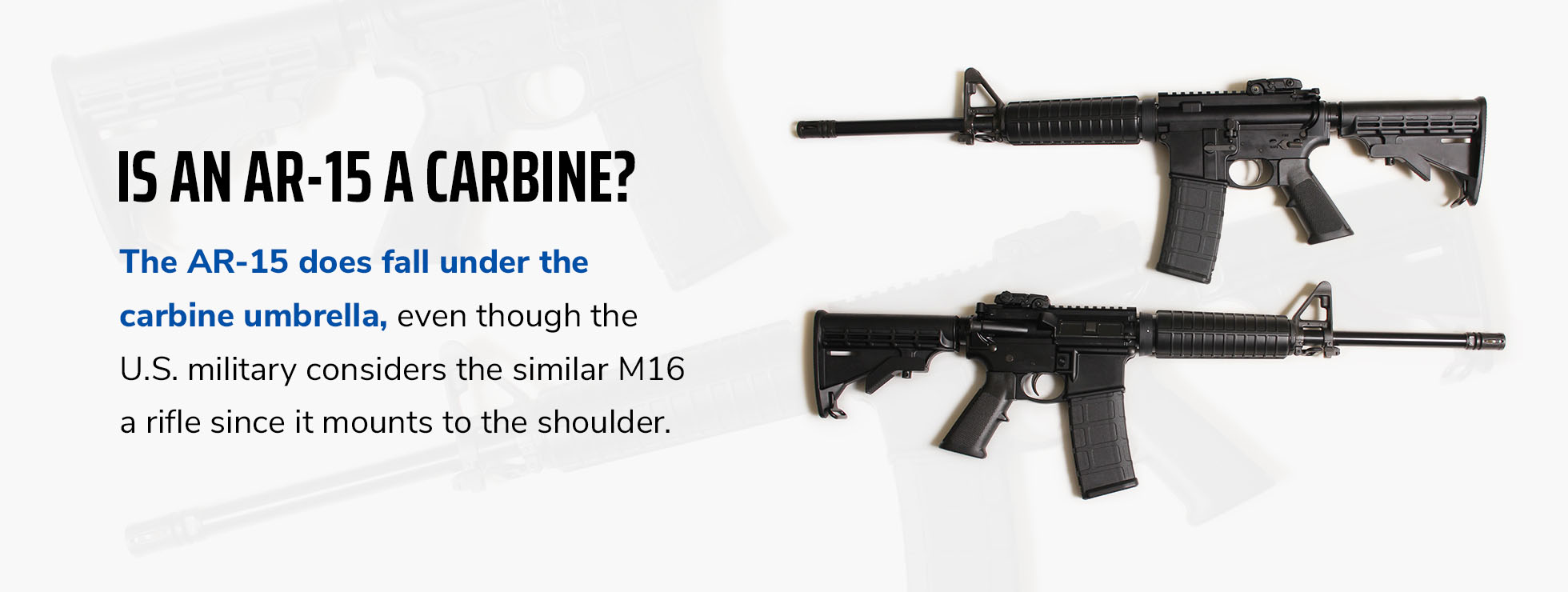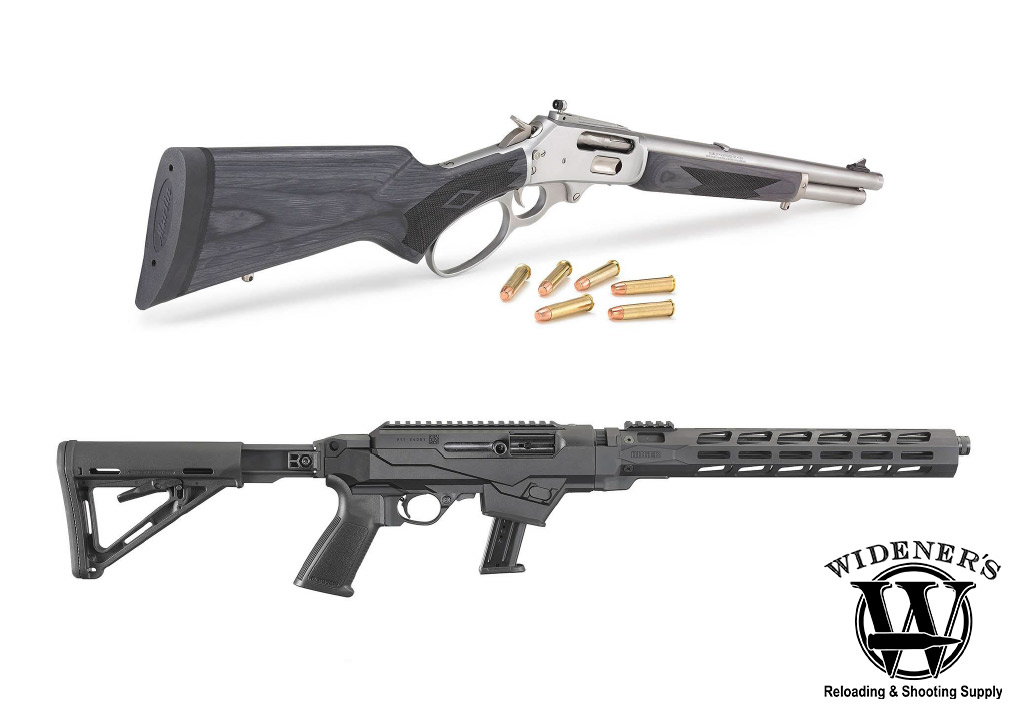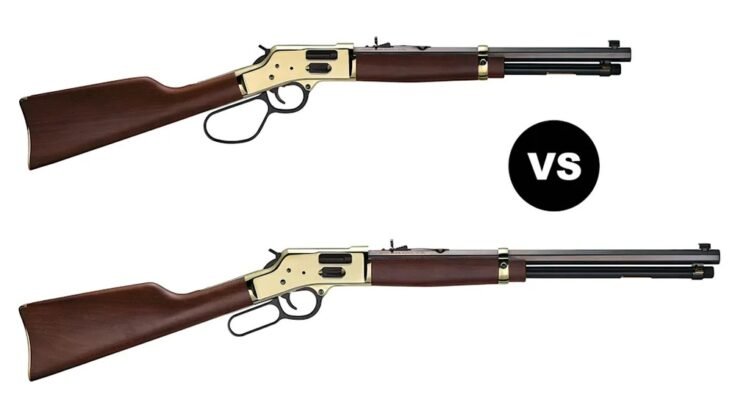Have you ever wondered what makes a carbine different from a rifle? If you’re curious about firearms or just want to understand the basics, knowing the key differences can help you make smarter choices—whether you’re buying, using, or simply talking about guns.
This isn’t just about size or looks; it’s about how each weapon performs and fits your needs. Keep reading, and you’ll discover clear, simple facts that can change how you think about these two popular types of firearms. Your next conversation or decision could depend on it.
Carbine Basics
A carbine is a shorter, lighter version of a rifle. It is easier to carry and handle in tight spaces. Both use similar ammunition but differ mainly in size and weight.
Definition And Purpose
A carbine is a shorter and lighter type of firearm. It looks like a rifle but is easier to carry. Carbines are designed for quick movement and close combat. Soldiers and law enforcement often use them. Their compact size makes them handy in tight spaces. Despite being smaller, carbines still deliver strong firepower. They offer a balance between power and portability. This makes them popular for many different uses.
Historical Development
Carbines first appeared centuries ago. Early versions were made for cavalry soldiers. Mounted troops needed shorter guns to use on horseback. Over time, carbines evolved to meet new military needs. They became more reliable and accurate. In the 20th century, many armies adopted carbines. These guns helped troops move faster and fight effectively. Today, modern carbines include advanced features and designs. Their history shows a constant push for efficiency and ease of use.

Rifle Essentials
Understanding rifles helps explain how carbines differ. Rifles have a long history and specific features. These features shape their use and design. Knowing rifle basics gives clear insight into their role.
Rifles are known for accuracy and power. Their design suits various tasks, from hunting to military use. The rifle’s length and barrel size impact performance. This makes rifles distinct from other firearms.
Core Characteristics
Rifles usually have longer barrels than carbines. This longer barrel helps bullets travel faster and straighter. Rifles also have a stock that rests against the shoulder. This adds stability and improves aiming. Many rifles use rifled barrels to spin bullets. This spin increases accuracy over long distances. Rifles often fire more powerful cartridges. This gives them greater range and impact. These traits make rifles effective for precise shooting.
Evolution Over Time
Rifles have evolved from simple muskets to advanced weapons. Early rifles were slow to load but accurate. New technology improved loading speed and reliability. Metal cartridges replaced loose powder and ball. Modern rifles include semi-automatic and automatic models. Changes in materials made rifles lighter and stronger. Designs adapted to different needs, like hunting or combat. Despite changes, accuracy and power remain key goals.
Size And Weight Differences
Size and weight play a big role in the difference between a carbine and a rifle. These factors affect how easy the gun is to carry and use. Carbines are often smaller and lighter than rifles. This makes them easier to handle in tight spaces and for quick movements. Rifles tend to be longer and heavier, which can help with accuracy but might slow you down.
Length Variations
Carbines usually have shorter barrels than rifles. A typical carbine barrel might be 16 inches or less. Rifles often have barrels 20 inches or longer. The shorter length of carbines helps in close combat or urban settings. Rifles need the extra length for better bullet speed and range. This length difference is a key factor in their design and use.
Impact On Portability
Because carbines are smaller, they are easier to carry. Soldiers and law enforcement prefer carbines for mobility. The lighter weight means less fatigue during long missions. Rifles, being heavier, are better for steady shooting at long distances. Carrying a rifle all day can be tiring. Carbines offer a good balance between power and ease of use.
Barrel Length And Accuracy
Barrel length plays a key role in the difference between a carbine and a rifle. It affects how far and how accurately a bullet can travel. Carbines have shorter barrels. Rifles have longer barrels. This change in length impacts both range and precision.
Effect On Range
A longer barrel allows the bullet to gain more speed. This helps it travel farther before it drops. Rifles, with their long barrels, offer greater range. Carbines have shorter barrels, so the bullet leaves the barrel sooner. This limits the distance the bullet can travel effectively.
Short barrels reduce the time the bullet is pushed by gas. This lowers the bullet’s velocity. Lower velocity means less energy and shorter effective range. Carbines suit close to medium distances better than rifles.
Precision Considerations
Long barrels provide a longer sight radius. This makes aiming easier and more precise. Rifles benefit from this advantage when shooting at distant targets. Short-barreled carbines have a shorter sight radius, making precise aiming harder.
Barrel length also influences bullet stability. Longer barrels allow the bullet to spin more before leaving. This spin stabilizes the bullet, improving accuracy. Carbines may sacrifice some precision due to shorter barrels.
Still, carbines are easier to handle and faster to aim at close targets. They offer a good balance of accuracy and mobility in many situations.
Ammunition And Caliber
Ammunition and caliber play key roles in distinguishing carbines from rifles. Both firearms use cartridges, but their size and power often differ. These differences affect how each weapon performs and suits specific uses.
Common Cartridge Types
Carbines often use smaller or shorter cartridges than rifles. This makes them lighter and easier to handle. For example, a carbine might fire a 5.56x45mm NATO round, the same as many rifles. But some carbines use pistol calibers like 9mm, which rifles rarely use.
Rifles usually fire larger, longer cartridges. These rounds provide more power and range. Typical rifle cartridges include 7.62x51mm NATO or .30-06 Springfield. The bigger size means rifles can hit targets farther away with more force.
Ballistic Performance
Ballistic performance refers to how a bullet flies and hits its target. Carbines generally have less recoil and lower muzzle velocity. This means bullets travel slower and hit with less force. It makes carbines easier to control but limits their range.
Rifles deliver higher velocity and greater energy. Their longer barrels help burn more gunpowder, increasing speed and power. This allows rifles to shoot accurately over longer distances. Rifles suit tasks needing precision and stopping power.

Handling And Maneuverability
Handling and maneuverability are key points that set carbines apart from rifles. These factors affect how easy a firearm is to carry, aim, and use in different environments. Carbines are designed to be lighter and shorter, making them easier to handle. Rifles tend to be longer and heavier, which can slow down quick movements.
These differences matter a lot for users who need to move fast or shoot in tight spaces. The balance between size and firepower often guides the choice between a carbine and a rifle. Let’s explore how each performs in handling and maneuverability.
Ease Of Use In Different Scenarios
Carbines excel in situations that need quick reactions and easy carrying. Their shorter length means less weight on the shoulder. This makes them less tiring to hold for long times. Carrying a carbine through dense forests or crowded areas is simpler.
Rifles offer more stability for long-range shots but can be cumbersome in tight spots. They require more space to swing and aim properly. This makes rifles less practical in fast-moving or confined environments. Carbines adapt better to various terrains and conditions due to their size.
Suitability For Close Quarters
Close quarters call for speed and control. Carbines perform well here because their compact size allows quicker turns and easier aiming. They fit better in doorways, hallways, and vehicles. This makes carbines popular for urban and indoor use.
Rifles struggle in close quarters because of their length. Maneuvering a rifle can be slow and awkward in tight spaces. This reduces the shooter’s ability to respond fast. Carbines give users an advantage in close combat or crowded places.
Application And Use Cases
The carbine and rifle each have distinct roles based on their design and size. Their applications differ widely in military and civilian settings. Understanding these differences helps clarify why one may be chosen over the other.
Military Roles
Carbines are favored for close-quarters combat. Their shorter length allows easier movement in tight spaces. Soldiers use carbines in urban warfare and vehicle operations. Carbines offer quicker handling during fast, intense fights.
Rifles serve well in long-range engagements. They provide better accuracy over greater distances. Infantry often carry rifles for open battlefields. Rifles deliver stronger firepower but can be heavier to carry.
Civilian Uses
Civilians prefer carbines for home defense and sport shooting. The compact size makes carbines easier to manage for beginners. Hunting small to medium game is common with carbines. They balance portability and power effectively.
Rifles attract hunters targeting larger game and long-range shots. Their precision and power suit outdoor sports well. Some rifles are used in competitive shooting events. Rifles offer more control for steady, accurate shots.
Customization And Attachments
Customization and attachments play a big role in how carbines and rifles perform. Both types of guns can be changed to fit different needs. This makes them useful for many situations. Understanding how each handles accessories helps you see their true differences.
Accessory Compatibility
Carbines usually accept many of the same accessories as rifles. They often have rails for mounting sights, lights, or lasers. Some carbines come with shorter rails due to their smaller size. Rifles tend to have longer rails and more space for extra gear. This gives rifles a slight edge in accessory options. Still, carbines remain very flexible with what you can add.
Modularity Options
Modularity means how easy it is to change parts on the gun. Carbines often offer quick changes for barrels, stocks, and handguards. This lets users adapt the carbine quickly for different tasks. Rifles also have modular parts but might need more tools or time to change. Carbines focus on quick swaps to stay light and handy. Rifles focus on stability and long-term setups.

Frequently Asked Questions
What Is The Main Difference Between A Carbine And A Rifle?
A carbine is shorter and lighter than a rifle. It offers better maneuverability but usually has less range and accuracy compared to rifles.
Are Carbines Less Powerful Than Rifles?
Carbines often use smaller or the same caliber as rifles but have shorter barrels, which can reduce bullet velocity and power slightly.
Can A Carbine Be Used For Long-range Shooting?
Carbines are primarily designed for close to medium-range shooting. Rifles are better suited for long-range accuracy and stability.
Why Do Military Forces Use Carbines Over Rifles?
Military prefers carbines for their compact size and ease of use in tight spaces and urban combat scenarios.
Conclusion
Carbines and rifles serve different purposes in shooting. Carbines are shorter and lighter, making them easier to carry. Rifles usually have longer barrels, which improve accuracy over distance. Both firearms use similar ammunition but offer distinct handling and performance. Choosing between them depends on your needs and situations.
Understanding their differences helps you pick the right tool. Simple and clear knowledge makes shooting safer and more effective. Keep these points in mind when comparing carbines and rifles.

